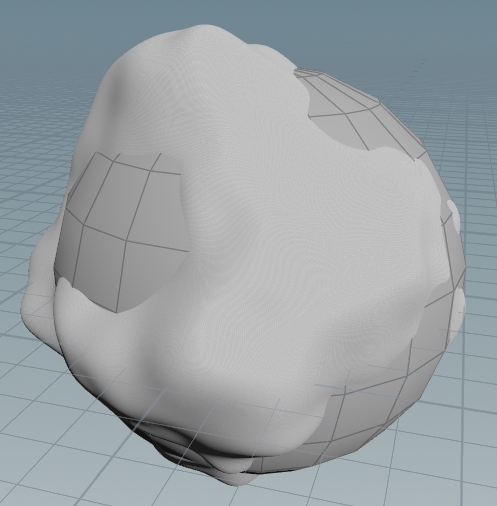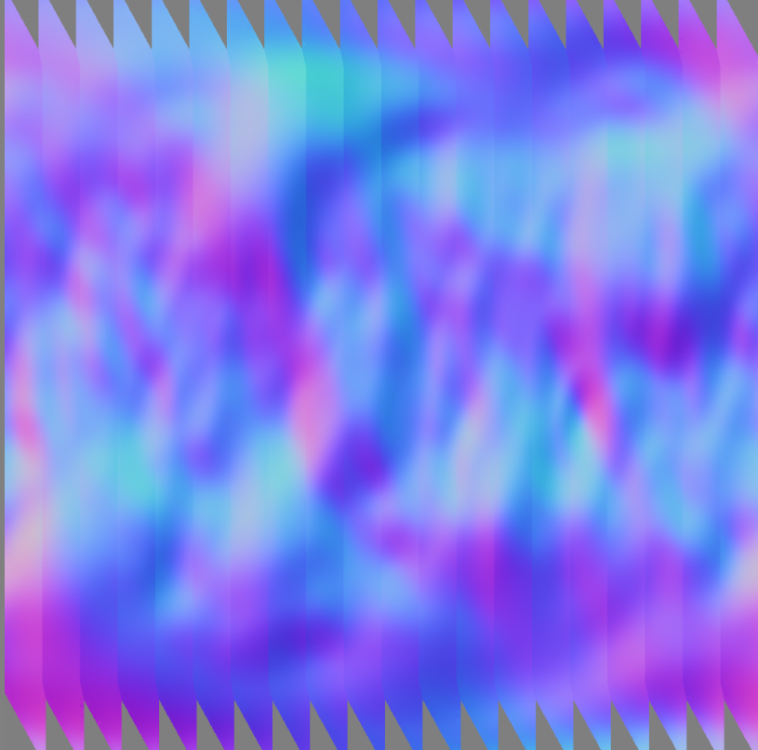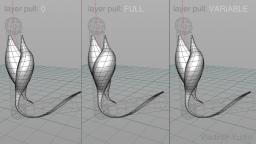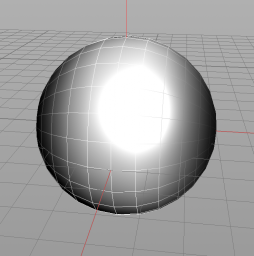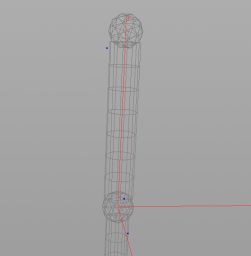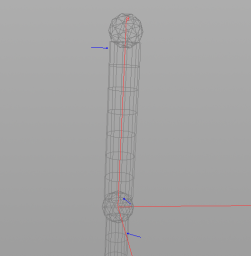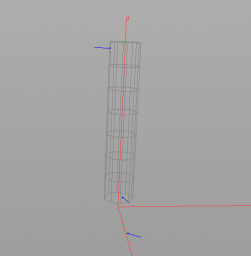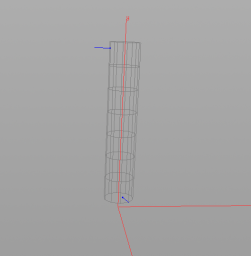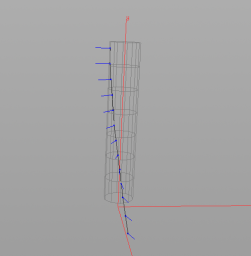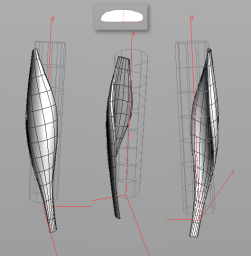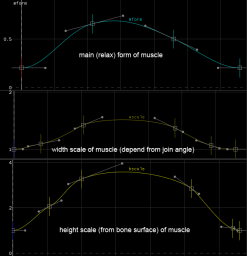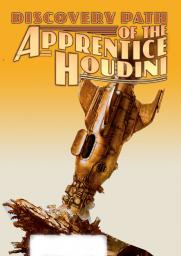-
Posts
68 -
Joined
-
Last visited
About Zanozza
- Birthday 01/04/1974
Contact Methods
-
Website URL
http://www.zanozza.com
Personal Information
-
Name
Vladimir
-
Location
London
Recent Profile Visitors
The recent visitors block is disabled and is not being shown to other users.
Zanozza's Achievements
Newbie (1/14)
5
Reputation
-
Hi there! I have quite stupid problem with attributes baking to texture... I need to bake high poly on low rez: I am using the "old school" way by using bake texure operator, not game tools (because the pipeline must be stable without any beta tools involved. Result is good enough except edges sharp edges on Normal map: I wouldn't make a flat source as Rohan advised here: http://www.rohandalvi.net/baking Can you advise me please how to avoid that "tiling"? This is my scene: ProceduralBaking.hip Thank you in advance!
-
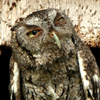
Specialization project - Procedural road system / Graduation project -
Zanozza replied to Xims's topic in Finished Work
Do you have this procedural road as unique mesh? I think the best approach is to use pre-defined pieces for different types of the road and combine them together as a instances. This will let you to save a lot of memory and will let you to stream your road by easy way. I would really advise you to take a closer look to road system on GTA5 - how road connections made, tiles, texturing etc. This is the best game reference at this moment. Good luck! -
Hi! Very simple question: I have: 1. The grid: 2. Number of iterations. In every iteration I would set color attribute to points. Easy, by Set Attribute VEX node. The problem: inside of iteration I would check first the existing value of color on point X. How to do this properly? My geometry - is grid in memory, not geometry from file. Help me please. Thank you!
-
Please check my old video about any data transfer between Maya and Houdini: Idea is: you collect your attributes (including custom) in Maya and then transfer them as dictionary to your "receiver" operator in Houdini through rpc server (network). Another way - same, collect data, save in text file (xml etc) and then in Houdini read this file (by Python based operator, for example) and apply data...
-
I really would continue, but my XBOX ONE tasks take all my time Hopefully, month later, close to release, I will get a chance to continue.
- 21 replies
-
- 1
-

-
- muscles
- procedural
-
(and 1 more)
Tagged with:
-
Here is the many, many ways to build First of all, I would detect intersections/merging areas and replace them by pre-settled assets "crossroad", "merge left" etc. This is the "proper" way to build, as I think. Also you can remember rest position, triangulate 2D, restore position and then apply your magic to clear up and do necessary changes. Another way - to rebuild the road completely by detecting edges and create another mesh. Everything depend from your final target. I would be targeted on modular way. In this case the first way is the best ones...
-
Another short update (sorry, this is my hobby). As you can see, I've got control on int-muscle sliding. 1 - muscles sliding without affect; 2 - under layer is "pulling" higher muscle layer in full affect; 3 - "pulling" is variable and depends from higher muscle' tension.
- 21 replies
-
- muscles
- procedural
-
(and 1 more)
Tagged with:
-
Today this system in "prototype" condition, so I don't worry (yet) about performance. Sure, this isn't realtime, but approx 10-15 fps. I'm planning to write own solvers later, for muscles, inter-organs(muscles) layers, ribs and skins. But I want to create a working solution by standard Houdini operators first. Thank you for your warm feedback, my friends!
- 21 replies
-
- muscles
- procedural
-
(and 1 more)
Tagged with:
-
Another small update: video: As you can see, the muscles can slide one on another and working completely independently. Sure, every "bottom" layer affect to "upper".
- 21 replies
-
- muscles
- procedural
-
(and 1 more)
Tagged with:
-
Oh, looking forward for continue of this great stuff! Especially - of skin rendering!
-
This is not muscle (yet), but some hard obstacle, like knee (sure, imagine a Pretty Girl' knee! ), ribs, clavicle etc movement under skin: https://vimeo.com/64062146
- 21 replies
-
- 1
-

-
- muscles
- procedural
-
(and 1 more)
Tagged with:
-
Thank you, my friends, for a warm feedback! I haven't so much time as I would to spend for this wip, but, anywa, there is the new week and I have something to show you again! Today is "Fat Skin Day" Please take a look on video of sliding skin: This sphere' skin have most of "freedom" of "fat under" sphere' Equator and less freedom on sphere' Poles. Bonus is - skin is polygonal object and can have ANY topology structure. On this example I have very low-poly polygonal object. Sure, with more polygonal dense we can get more "smoothed" topology deformation (or "flow"). Dynamic itself will stay same. Sure, every elasticity attribute can be painted or settled procedurally: - "freedom"; - layer of "fat thickness"; - fat linear constant; - fat linear damp; - fat angular constant; - fat angular constant; So, this is original sphere: Painted "freedom" attribute: Finally, this is visuar representation of "freedom" as a normals length (for your visual consideration):
- 21 replies
-
- muscles
- procedural
-
(and 1 more)
Tagged with:
-
Hi! I've been very impressed by Weta's "Digital Tissues" ( http://www.fxguide.com/fxguidetv/fxguidetv-166-weta-digitals-tissue-system/ ) so decides to try to create simplified muscle rig. The target: 1. Muscles can be created procedurally. 2. Muscles can be created manually (sculpted) but placed procedurally. 3. Muscles not intersected with bones or another muscle layer. 4. Muscles can move by active or passive way (joint bended by muscle itself or by another force). 5. Muscle can be affected by gravity, acceleration, in-between muscle layer or skin. So, this is the first, very simple iteration: How this works for now? (simplifier version): We have a shulder and sub-shoulder: Place the main points of muscle and tendon attachment: Generate the points normals, perpendicular to surfaces: Project points to surfaces: Left muscle points only: Generate the spline from one muscle point to another on bone surface: Sure, we can do the same including the tendon' attachment: Now generate the muscle based on this spline and given muscle profile: The parameters of muscle: The form of muscle is based on "form" curve. The form changes with muscle contraction is controlled by "width scale" and "height scale" curves. They depend from joint angle. So, to be continued! Any questions or suggestions is welcome!
- 21 replies
-
- 1
-

-
- muscles
- procedural
-
(and 1 more)
Tagged with:
-
Hi! I have acrazy Idea: I would use ramp for a random choose from values. For example, I have 3 values: 0.1, 1, 0.56 with different "possibility" of choose. So I've build a ramp with constant interpolation: So now I wil get random number, let say, 0.56. As we can see, this number is placed in the middle of ramp and result will be "1" (second from list). This working perfectly, but I have a question: How to build or edit this ramp not by hand but inside of VOP? Thank you in advance!
-


